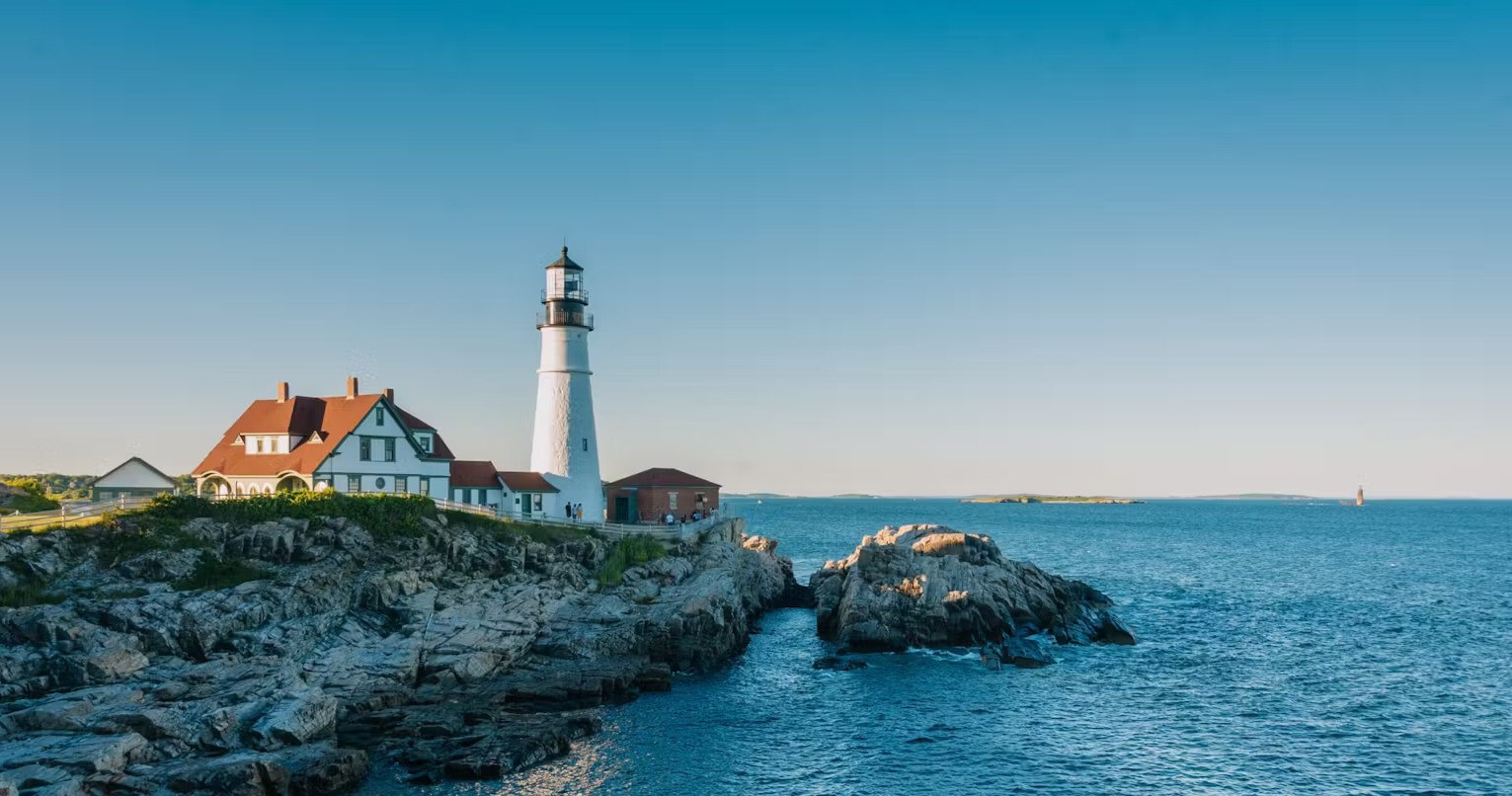Portland’s shoreline, viewed from the unique vantage of a boat, offers photographers a chance to capture dramatic cliffs, serene waters, and active wildlife. This guide reveals practical tips to make the most of your voyage—optimizing light, angles, and gear for vibrant, sharp images every time.
Plan for Early Morning Light
Shoot during early hours when the sun is low, creating long shadows and warm tones that give depth and texture to shoreline photos.
Use a Fast Shutter Speed
Boat movement demands shutter speeds at 1/500 sec or faster to reduce image blur caused by rocking and water motion.
Bring a Polarizer Filter
Polarizers cut glare from water surfaces and enhance sky colors, making reflections crisper and saturating shoreline hues.
Protect Your Gear from Moisture
Carry waterproof bags and lens cloths; the coastal spray and fog easily compromise electronics and lenses.
Sharpen Your Lens: Photography Tips for Capturing Portland’s Scenic Shorelines from a Boat
Cruising Portland’s shoreline delivers a unique vantage point to capture the city’s fierce coastal spirit. From the rocking deck of your boat, you’re invited into a dynamic play of light, water, and rugged cliffs that resist the urban’s pull. Here's how to translate that untamed shoreline energy into sharp, compelling photographs.
Choose the right time. Early morning light is crucial. The sun leaning low across the water casts long shadows and ignites colors, giving your images depth. Late afternoon offers warm tones but watch for wind that can churn the water and blur reflections.
Stabilize your shot. A boat is never still; the currents push and tease, always slightly unpredictable. Use a fast shutter speed—1/500 or higher can freeze the motion of the waves and the boat’s sway. If your gear doesn’t allow it, brace yourself, lean into your camera with steady hands, and lock your elbows in tight.
Mix wide and tight. Wide-angle lenses frame the expansive shoreline, cliffs, and trees pushing back against the water’s advance. But don’t miss close-ups. The shoreline is alive with textures: weathered driftwood, seaworn rocks, barnacles clinging to edges. A telephoto setting captures these smaller details from the boat without disturbing.
Plan your angles. Shorelines ripple with contrasts—smooth water meets jagged rock, soft moss battles harsh bark. Position your boat to capture natural lines that draw the eye, such as a curve of a bay or a jutting headland. Move slowly to find fresh perspectives.
Light and reflections. Pay attention to how light interacts with the water’s surface. Glassy calm offers mirror-like reflections, while choppy waves scatter color in fractals. Polarizing filters are highly useful—they suppress glare and enrich colors, giving sky and sea sharper definition.
Prepare for conditions. The shore is wild and unpredictable, and your boat ride won’t be calm all the time. Waterproof gear for your camera and yourself is essential—Pacific Northwest weather often plays tricks. Keep extra batteries warm and dry; cold moisture drains power faster.
Safety and respect. The shoreline is fiercely itself, so watch for sudden weather shifts and stay alert for local marine life, like seals or seabirds pushing close to the surface. Remember to keep prohibited distances from wildlife and private properties.
With preparation, patience, and an eye tuned to the shoreline’s bold contrasts, your boat-bound shoot in Portland will yield images that hit the mark: real, raw, and resonant. The shoreline invites engagement, and with every frame, you answer its call.
Nearby Trips
All Adventures
Boat Charters
Water Activities
Adventures near Portland
Discover the unique and memorable adventures that make Portland special.
Frequently Asked Questions
What’s the best lens choice for shoreline photography from a boat?
A versatile zoom lens (24-70mm or 70-200mm) works well to capture sweeping landscapes and intimate close-ups of textures and wildlife without switching gear mid-ride.
How do I protect my equipment from sea spray while shooting?
Use waterproof or water-resistant camera covers and bags, and keep lens cloths handy for quick cleaning. Avoid changing lenses on the open boat to minimize exposure.
Are there lesser-known viewpoints along Portland’s shoreline accessible by boat?
Yes. Smaller coves like Willamette Cove offer quieter areas with rock formations and bird colonies, providing unique compositions away from popular spots.
Can I encounter wildlife close to shore that I should be aware of?
Harbor seals often lounge on rocky outcrops and swim near boats. Ospreys and herons patrol the shoreline, offering photo ops but requiring respectful distances.
How does Portland’s shoreline reflect its history and culture?
The shorelines carry traces of Indigenous fishing grounds and early settler trade hubs, still marked by docks and old piers, blending natural beauty with human stories.
What environmental concerns should photographers be mindful of while boating?
Avoid disturbing wildlife habitats, especially nesting birds. Use non-invasive approaches and comply with boating regulations to protect fragile shoreline ecosystems.
Recommended Gear
DSLR or Mirrorless Camera
Essential for control over shutter speed, aperture, and ISO needed to adjust for water reflections and movement.
Polarizing Filter
Reduces glare on the water and enriches color saturation, indispensable for shoreline photography.
Waterproof Camera Bag
Protects your camera from unexpected spray, fog, or rain common in cooler months.
Non-slip Footwear
Supports balance on slick decks and wet surfaces, reducing risk of falls during your shoot.
Local Insights
Hidden Gems
- "Willamette Cove"
- "Ross Island views"
- "The ‘ghost docks’ near Swan Island"
Wildlife
- "Harbor seals"
- "Ospreys"
- "Great blue herons"
- "River otters"
History
"Portland’s shoreline reflects its importance as a trading and fishing corridor, with remnants of wooden piers and Indigenous cultural sites visible from the water."

